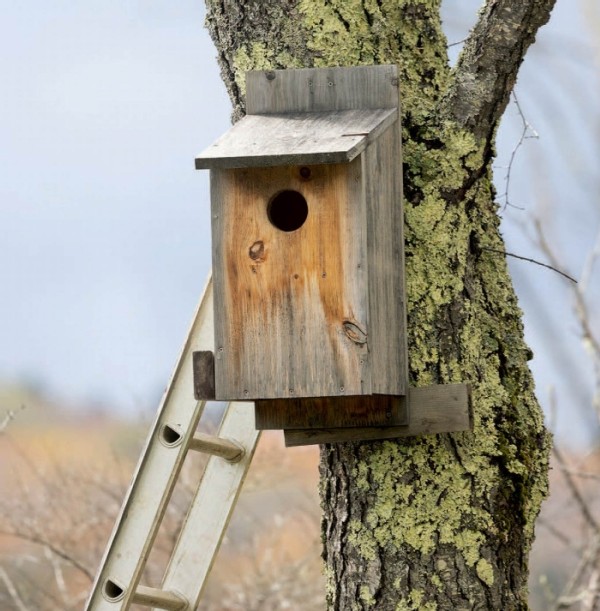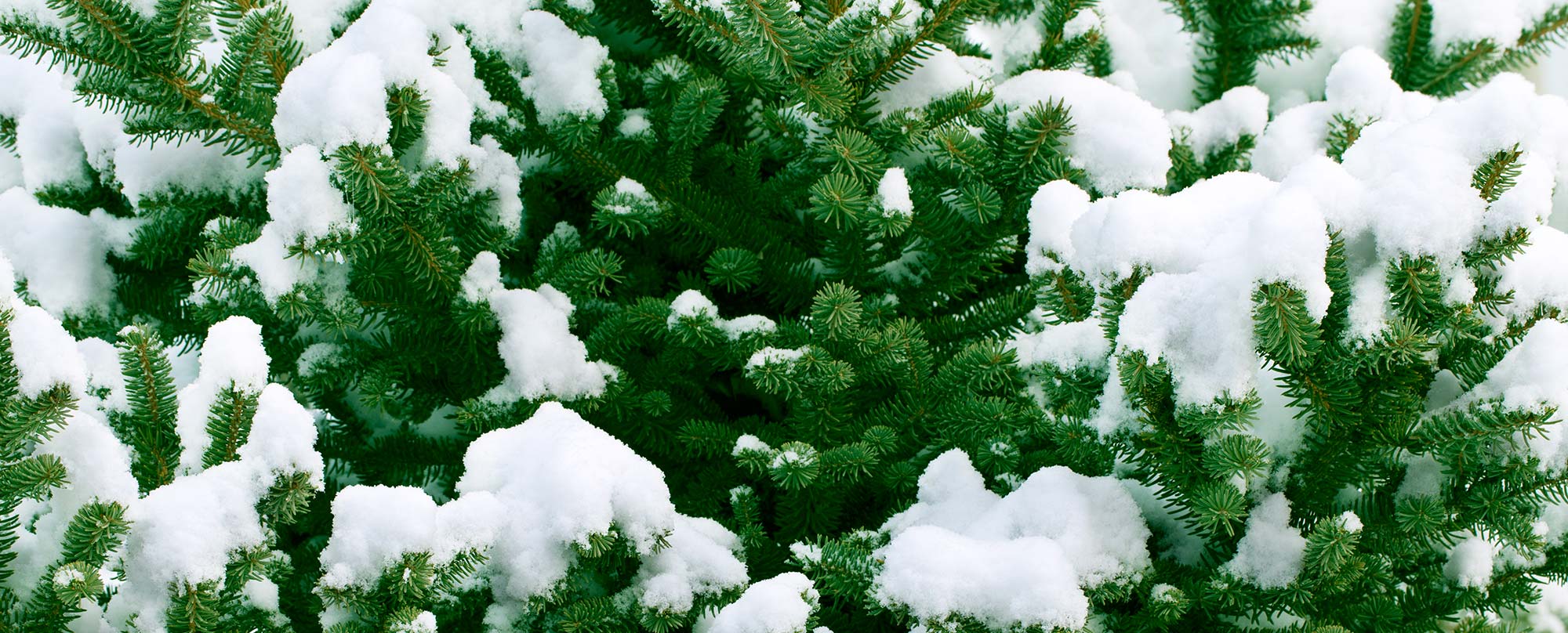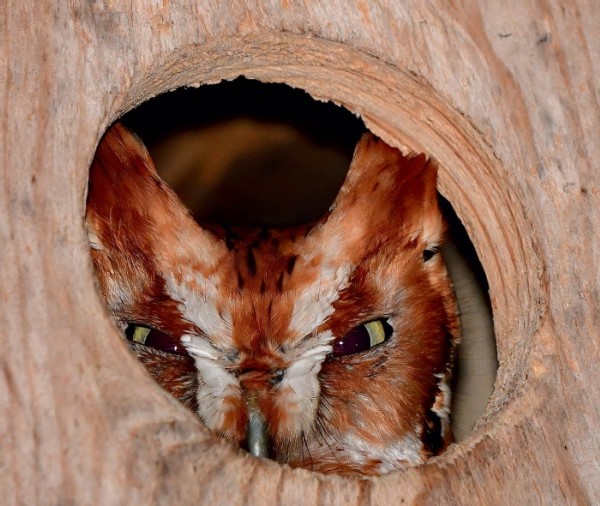For an owl, choosing the perfect place to nest is a balancing act. It’s not just about finding a hole in a tree or the side of a barn. The entry must be big enough to let the owl and its mate inside, but not so big that it allows access to larger nest predators. It must be high enough off the ground to be hidden from foxes, weasels, and other mammals, but not so high as to attract a hawk to an easy meal.
Eastern screech owls are a balance in themselves. As one of the smallest owls in the Northeast, they straddle the line between predator and prey. Although Partners in Flight, a leading cooperative effort among public and private institutions promoting bird conservation, rates eastern screech owls as a species of low conservation concern, their numbers appear to be declining in parts of their range. One way to help these owls, and to enjoy observing them during nesting season, is to build and install a nest box. Here’s how to get the details just right:
Building a Nest Box
Cornell University’s website, NestWatch.org, offers detailed plans for constructing an eastern screech owl nest box, as well as plans for boxes suitable for dozens of other species. The screech owl design is also appropriate for northern saw-whet owls, boreal owls, and American kestrels. Cornell’s recommended box dimensions are 17 3/8 inches tall, 9 5/8 inches deep, and 11 1/4 inches wide. Owl boxes should be made of untreated wood (pine is best) and held together with galvanized screws.
Ideally, the entry hole should be a 3-inch-by-4-inch oval, but a 3-inch diameter round hole will do. If it’s too small, adult owls simply won’t fit; too large, and the nest contents could become a raccoon’s meal. Extending the back of the box a few inches above the roof’s higher edge and below the floor will give you an easy surface with which to mount the box on a tree.
Weatherproofing is key to happy, healthy young owls and a box that will last many breeding seasons. To keep the box dry on the inside, make sure the roof slopes forward and the floor is recessed at least 1/8-inch into the box. Add drainage holes by simply cutting off the corners of the floor piece before slotting it in. Once you have assembled the box, seal any exposed end grain with clear caulk to extend the life of the wood. There is no need to paint or stain the outside of the box, and in fact it is not recommended to do so, as fumes from the paint could be harmful. Ventilation holes are important for keeping the box cool and can be drilled into the side panels of the box, just below the roofline.
Of course, it’s the finishing touches that make a house a home. There is no need for a perch on the outside – and a perch can actually act as a foothold for predators to get inside. Instead, mount a flat perch on the inside, about 2 inches below the entrance hole to allow the young easy access to the outside world when they are ready. Although eastern screech owls don’t build nests and will lay their eggs on the bare floor of a tree hole, putting 2 or 3 inches of untreated pine shavings in the bottom of the box will make it attractive. Finally, make sure one side of the box hinges open to allow for periodic cleaning after the nesting season.

Siting the Box, and Being a Good Owl Neighbor
A beautiful house only gets an owl family so far. If the neighborhood isn’t great, the young owls will struggle in their most vulnerable stage: those first few weeks outside the nest. You can increase the likelihood that owls will nest successfully by making sure you choose an appropriate site and (especially if that site is in your yard) taking steps to enhance habitat.
Unlike deep woods species, eastern screech owls thrive in areas where there’s a combination of trees and open areas, and they often nest at the edges of clearings, including the tree-lined edges of suburban lawns, or near a pond or stream. Although they get a lot of the water they need from their food, they do need to drink and do best near a source of fresh, clean water. Eastern screech owls are especially fond of bathing. They will stand up to their ankles in shallow water, lean down, and splash water over their feathers by vigorously shaking their wings, head, and tail.
If you decide that your yard is a good site, consider habitat enhancements:
- Eliminate rodenticide and pesticide use and talk to your neighbors about doing the same. Small owls eat rodents, but also a lot of insects, and these chemicals can be very harmful to a growing owl family.
- Landscape with native plants and consider reducing your mowed lawn area. Allowing space and resources for rodents and other prey to thrive (in your yard, not in your house!) helps ensure enough food for the owls and other small predators.
- Provide a source of fresh water. A bird bath will do, but only if regularly cleaned to avoid transmitting diseases.
Install Your Box
Plan to install your completed nest box long before the breeding season begins. Eastern screech owls begin nesting in late February, so you should have your box up in their territory by December. Look for a live tree at least as wide as the nest box itself, located in a forest clearing or near a stream or field edge. For extra shelter, place the box under a tree limb. It can also be helpful to choose a place with a branch nearby for the young to climb onto as they learn to fly, but it should not be directly in front of the entrance hole.
For screech owls to feel at home, the box should be mounted between 10 and 30 feet above the ground, facing any direction. (Northern saw-whet owls, on the other hand, prefer a south-facing nest at a maximum height of 15 feet; it all has to do with each species’ particular criteria for a place that is “just right” to keep their young safe and healthy.) Multiple owl boxes can be placed within the same area but should be more than 100 feet from one another.
You may find that your box becomes a home for squirrels or other bird species instead. Mounting and cleaning the box at the right time of year (November or December) should ensure that the window is open for owls to move in first.
Although sometimes owls move in right away, it may take years for your nest box to attract a screech owl pair. Don’t be disheartened – keep your ears open for the high-pitched, whinny-like hoots of these cryptic creatures, and consider installing a game camera near the box to monitor visitors. You may be surprised whoooo your new real estate attracts!
Recommended Reading
- The Features of a Good Birdhouse
- Eastern Screech Owl Nest Boxes
- Improve Your Habitat for Nesting Birds
- Woodworking for Wildlife: Homes for Birds and Animals, Carrol L. Henderson (University of Texas Press, 2010)


